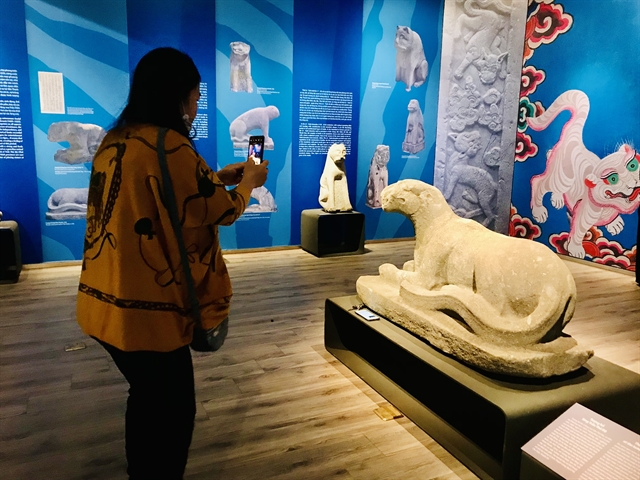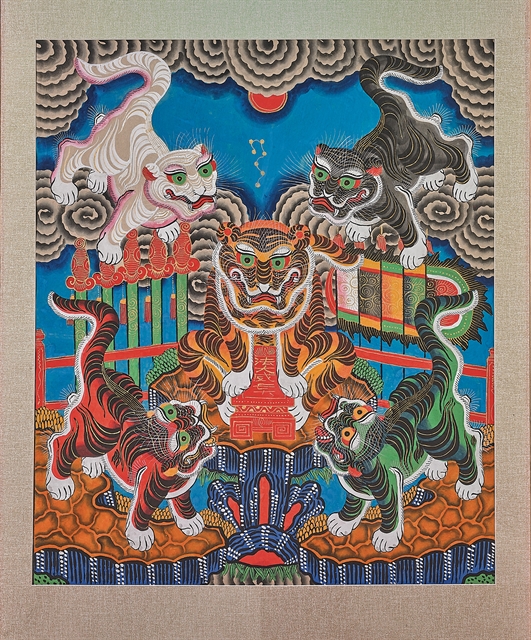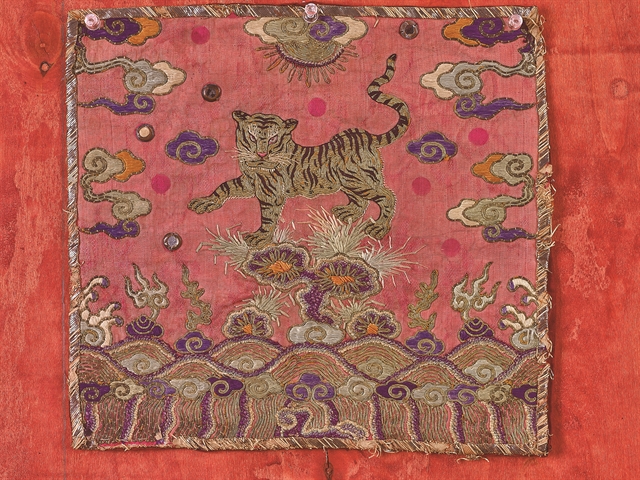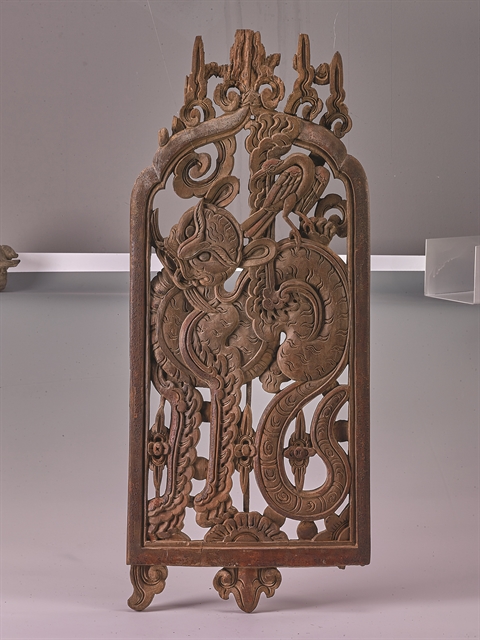[ad_1]
HÀ NỘI — More than 30 antiques and documents bearing images of tigers are on display at the National Museum of Vietnamese History in downtown Hà Nội.
Titled “Tigers in Ancient Vietnamese Fine Arts”, the exhibition celebrates the upcoming Lunar New Year — the Year of the Tiger which falls on February 1 this year. The event is hosted by the museum, the Hùng Temple Historical Relic Site and private collectors.
“The image of tigers has accompanied and made distinguished features to the history of Vietnamese fine arts,” Nguyễn Thị Thu Hoan, deputy director of the museum, told Việt Nam News.

The tiger image is introduced here according to the historical period and materials, she said.
“In the Đông Sơn civilisation (800 years BC) period, the tiger image was associated with respect and worship of the power and holiness of the animal, which came with the belief to worship ancestor objects and the concept that all objects and animals have souls. The belief is quite popular among some ethnic minority groups now,” Hoan said.
During the first ten centuries, the tiger image started to come along with the concept in Four Holly Animals including Thanh Long (Azure Dragon represents the east), Bạch Hổ (White Tiger, the west), Chu Tước (Vermilion Bird, the south), and Huyền Vũ (Black Tortoise, the north). The animals also represents other factors like four seasons, human’s characters, natural elements and positions of stars in astrology in ancient time.

The exhibition has a separate part called “Tiger in Royal Tombs between 13th and 18 Centuries”. During the Trần dynasty (1225-1400), tigers appear in strong and vivid figures, expressing their power in the real life and the role of a holy animal protecting royal tombs.
“Tiger in Ceramic Art” is another highlight of the exhibition. In comparison with other holy animals like the dragon, phoenix, kylin, bird, fish, duck, deer or horse, the image of tiger appeared less often in ceramics. However, tiger appeared fairly early and continuously in ceramic wares, said Hoan.
The first tiger image was found in brown flowery glazed vase in the Trần dynasty. The Guimet Museum in Paris is still displaying such a vase with three tigers running after one another.

Excavations of a wrecked ship in Cù Lao Chàm (in 1997-2000) in Quảng Nam Province, and ancient ceramic kilns in Nam Sách and Bình Giang in today’s Hải Dương Province showed various images of tigers as decoration patterns.
In sculptures at communal houses in the 16th-18th centuries, people have found tigers carved at famed communal houses like Tây Đằng, Chu Quyến and Nghiêm Xá (in Hà Nội); Trùng Hạ (Ninh Bình Province), Chảy Communal House (Hà Nam Province), Thổ Tang (Vĩnh Phúc Province), Hùng Lô (Phú Thọ Province).

“Tiger images at communal houses expressed a familiar world without any limitations in designing graphics, with a varied ways in expressing art and simple in appearance,” Hoan said.
“Sculptures of tigers found at communal houses shows witty, simple, innocent and energetic visions of folk artisans.”
The exhibition also displays Hà Nôi’s Hàng Trống folk paintings featuring five tigers, a famed worship painting handed down through generations.
There are also paintings featuring single tigers with various colours like blue, white, red and black tigers.
The final part of the exhibition titled “Tigers in Fine Arts in Nguyễn Dynasty, 19th-20th Centuries”. Tiger images were featured in a diverse style from royal to ordinary life, from religious symbols to daily life.
“A collection of embroidered paintings possessed by the museum shows that tiger images were exploited in various meanings like good fortune, best wishes and wiping away evils,” Hoan said.
Researcher Đặng Văn Bài, deputy chairman of the National Heritage Council, noted that the exhibition contains various high values, which help educate the youth to respect nature, preserve wildlife in general and tiger in particular.
The exhibition runs at the museum, 1 Tràng Tiền Street till August 31. — VNS
[ad_2]
Source link